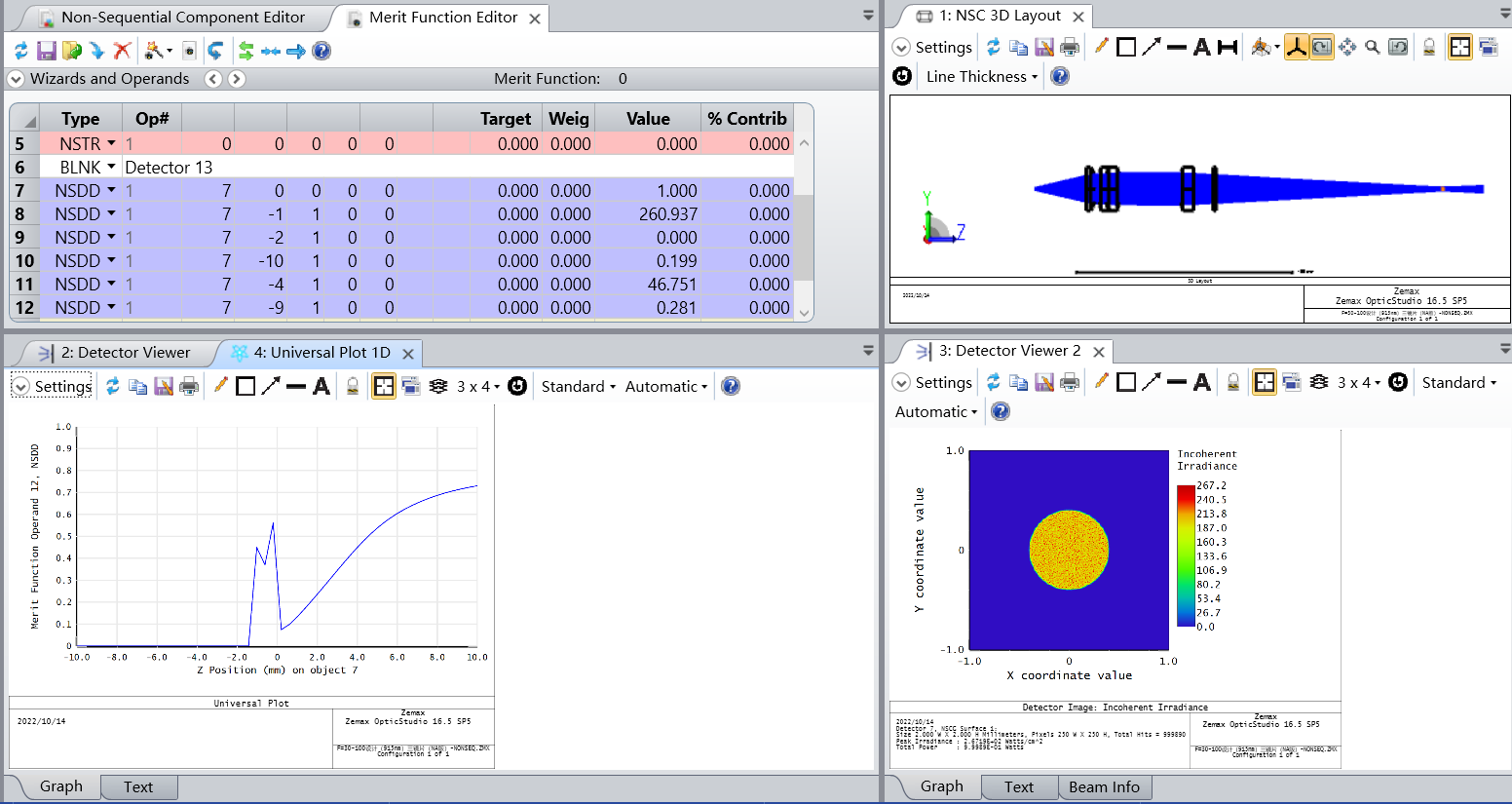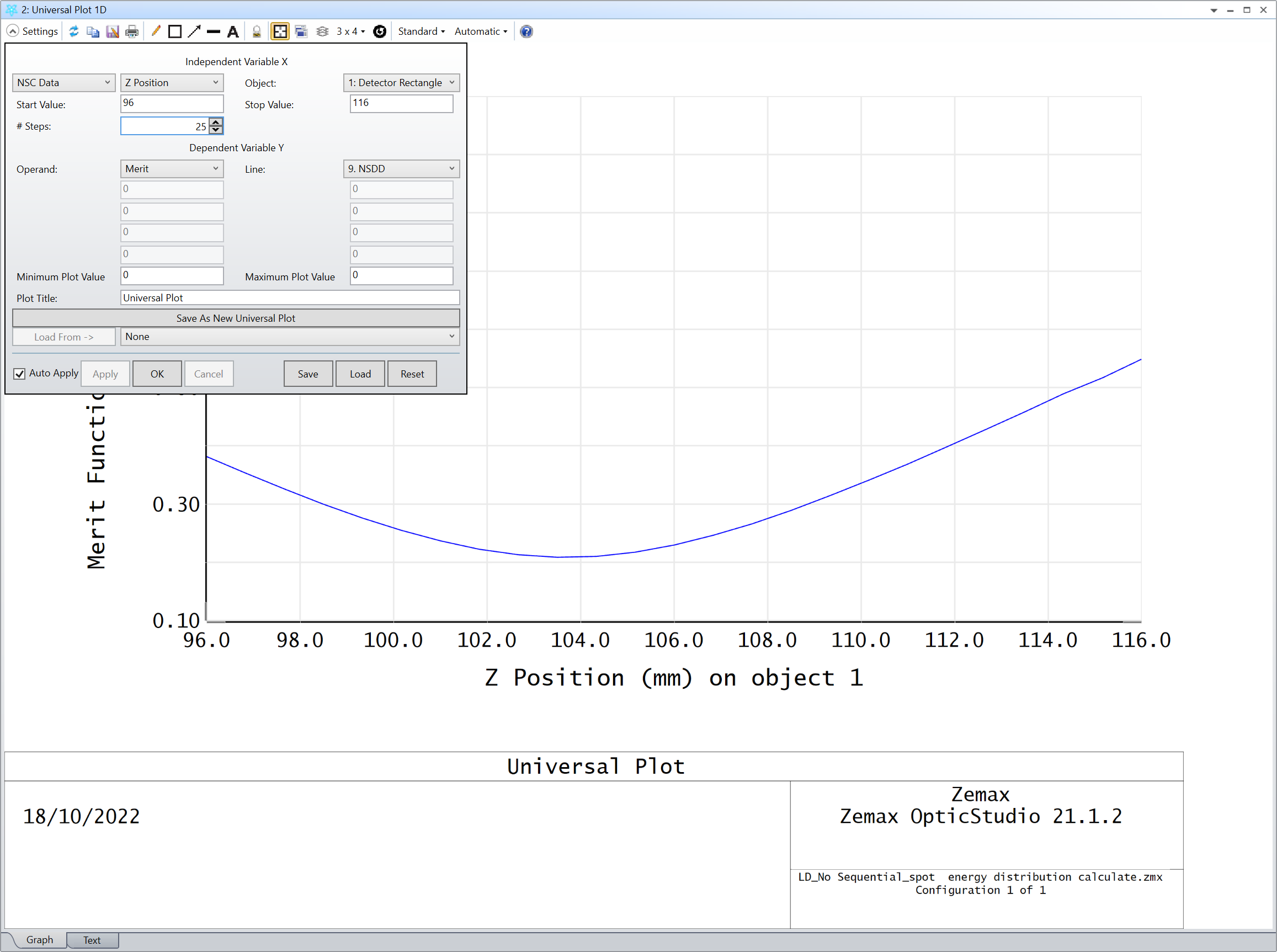Hello, When I run a universal plot 1 D in non-sequential mode, why is the curve of NSDD so strange as follows?


Hello, When I run a universal plot 1 D in non-sequential mode, why is the curve of NSDD so strange as follows?


Best answer by David.Nguyen
Hi,
At Z Position = 0.0, your Detector Rectangle is basically overlapping with your Source.

Therefore, NSDD returns zero. When you go to negative values, your detector is behind the source, so NSDD continues to return zero. Only with positive values >0 and <10 does NSDD return sensible values, although the detector is between the lenses and the source (which probably doesn’t make sense). The jump that you observe is because the Detector Rectangle goes from not seeing anything (because it is colocated with the source) to a divergent Gaussian beam.
I see that by default, your Detector Rectangle has a Z Position of 106.0. If you want to move about this position, you need to use a Start/Stop value of 96/116 respectively (this is +/-10 around 106):

I hope that makes sense.
Take care,
David
Enter your E-mail address. We'll send you an e-mail with instructions to reset your password.